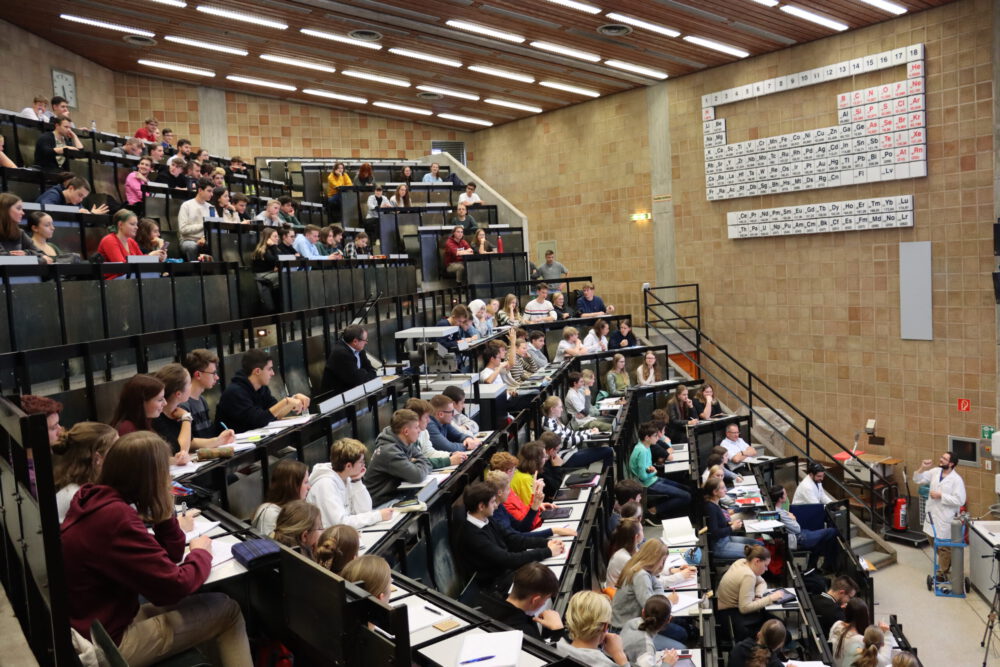How can the billions of tons of CO2 in the atmosphere be removed? What are the available solutions, and which are the best? In an impressive session at the Elite Academy for Chemistry and Materials Science, CRC 1333 Principal Investigator Jun.-Prof. Deven Estes explained to a packed room how the carbon cycle can be closed again and how we can save our climate and planet Earth.
The new academic year 2024 of the Elite Academy for Chemistry and Material Science was kicked off by CRC 1333 principal investigator Jun.-Prof. Deven Estes and his research group. In front of a packed room with about 150 school students from all over Baden-Württemberg and the best students from Faculty 3, Jun.-Prof. Deven Estes explained how the carbon cycle can be closed again and how we can save our climate and the world.
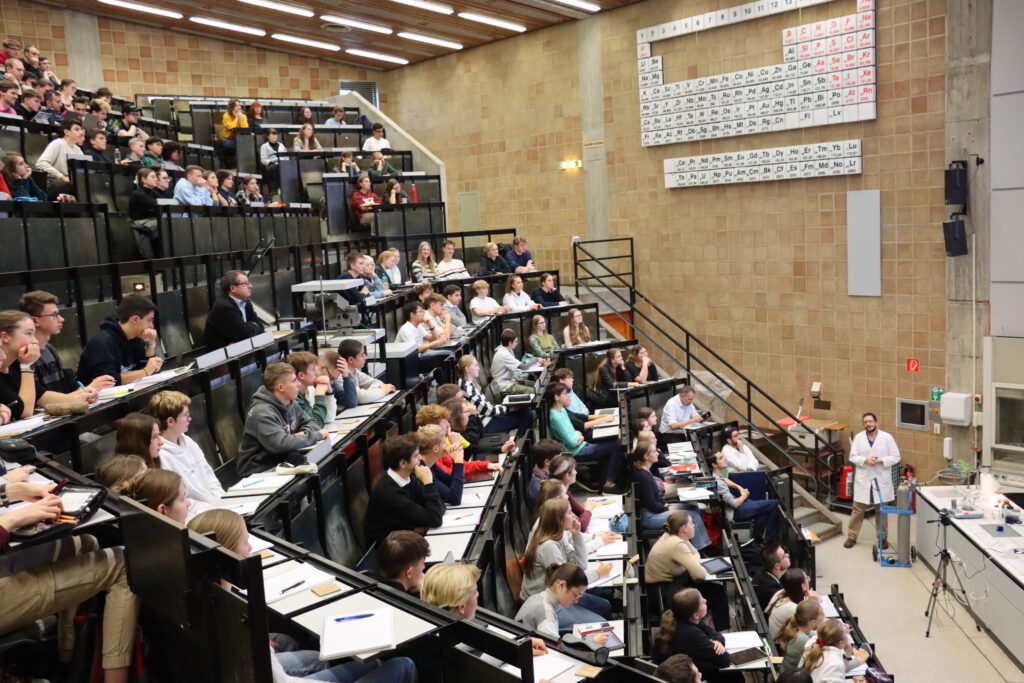
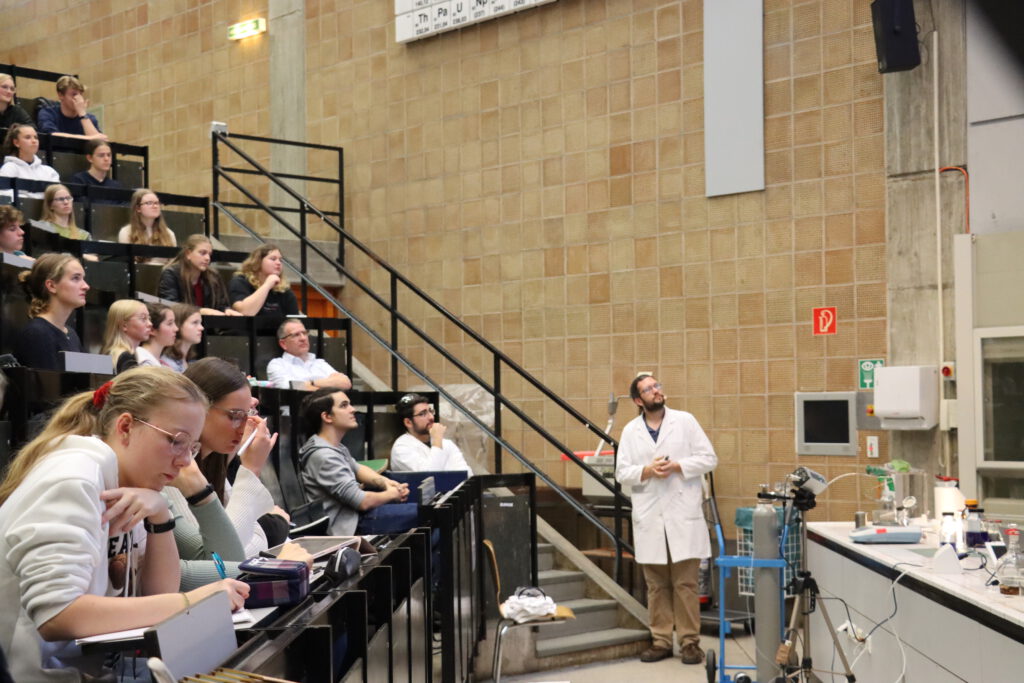
Photo Credit: CRC 1333/Hoang-Huy Nguyen
As an introduction to the topic, Jun.-Professor Estes first showed some photos of how we imagine summer to be, e.g. a wonderful beach vacation, and how it will soon be: unbearably hot. We expect a snowy winter with good opportunities for skiing, but even at high altitudes we often find only green slopes and artificial snow is used to make downhill skiing possible.
Scientific studies also show that the world as a whole has been warming significantly since the 1980s. This is consistent with the increasing amount of carbon dioxide in the air, as CO2 is the main source of the increase in heat. If we do nothing about global warming, we can expect temperatures to rise by about 6°C. The climate in Germany would then be comparable to the current climate in Spain, while temperatures in India and the Sahara would rise to such an extent that it would be almost impossible to live there.
But how does CO2 get into the air?
All living things contribute to the natural formation of CO2 through the metabolism and exhalation of CO2. Professor Estes demonstrated the presence of CO2 in breath through a small experiment: three volunteers from the auditorium were asked to blow through special tubes into a solution containing bromothymol blue as an indicator. The color of the indicator solution changed from blue to green as carbon dioxide accumulated.
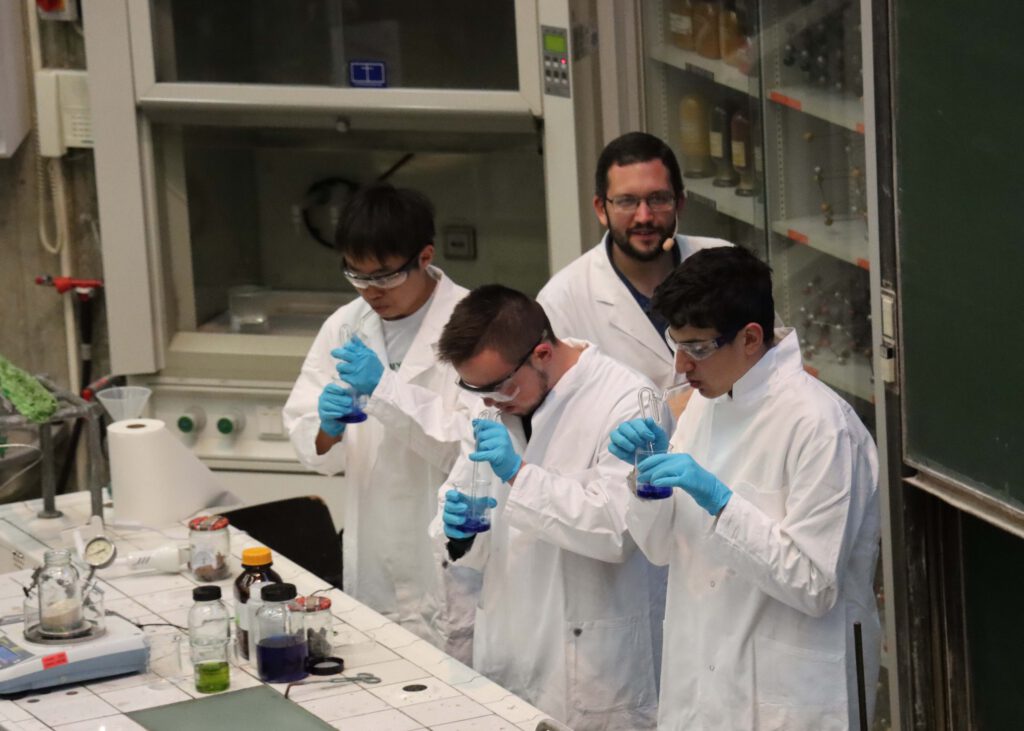
The amount of CO2 in the air is also significantly increased by anthropogenic production in the form of burning fossil fuels, agriculture and industry. The cheapest method is usually used, which is not necessarily the best for the environment.
The next part of the lecture was about removing CO2 from the air to stop global warming. We all learned in school that photosynthesis removes CO2 from the air. However, some members of the audience may have been surprised to learn that only 20% of photosynthesis is done by green plants. 70-80% is done by microorganisms in the water. This is why adjusting the pH level of the water is particularly important.
There are several options on how the amount of CO2 in the atmosphere can be reduced:
- the use of renewable energy, conservation and changes in the industrial culture
- to capture and reuse CO2
- to store CO2 underground, where it could react again to form lime within thousands of years
Another option was was demonstrated by Jun.-Prof Estes in an impressive experiment: zeolites can also store carbon dioxide.
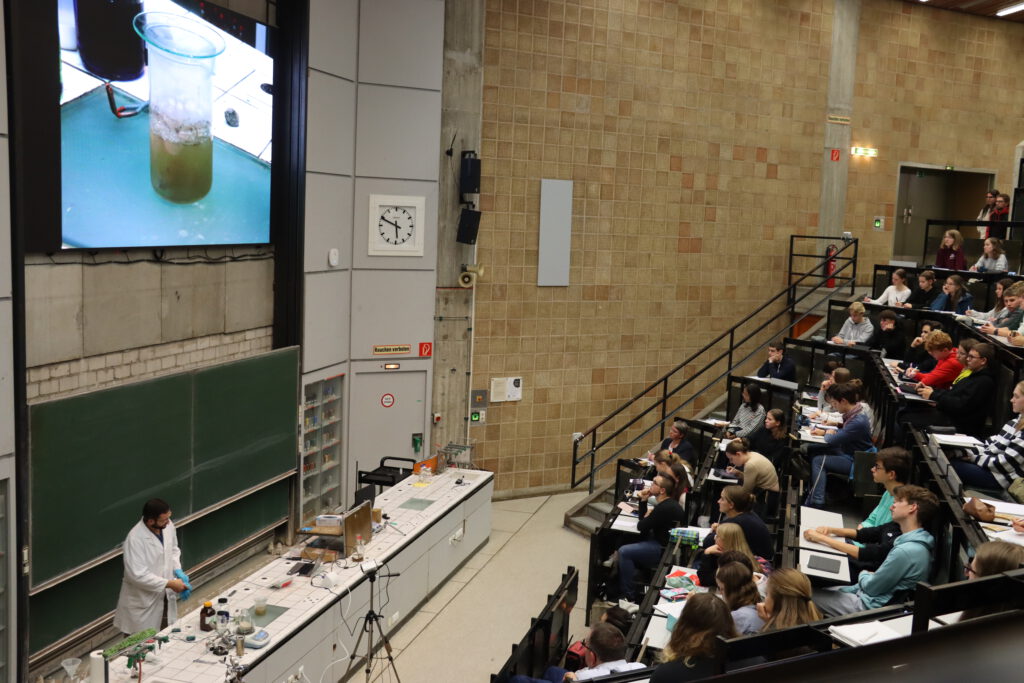
The last part of the lecture was about making CO2 usable again. Jun.-Prof. Estes showed some examples here, e.g. the production of plastics or the formation of formic acid or methanol as important chemical raw materials.
However, when you consider that billions of tons of CO2 are involved, it quickly becomes clear that there is no simple, single solution, but that all possible avenues must be explored to combat climate change. It is important that the different paths become economically attractive, which will often only be possible by changing the law.
Jun.-Prof. Estes concluded: “We must act now, before it is too late.”
At the University of Stuttgart’s Elite Academy for Chemistry and Materials Science, students can take advantage of advisory services, a wide range of networking opportunities and continuing education programs. Access to the fast-track doctorate program allows for close contact with research and faculty. Curious students can get involved in taster courses and lecture series. The target group includes high-achieving Bachelor’s students in chemistry and materials science (including teacher training) as well as school students from grade 10 who are interested in the taster course.
More information on this lecture in German can also be found here.
